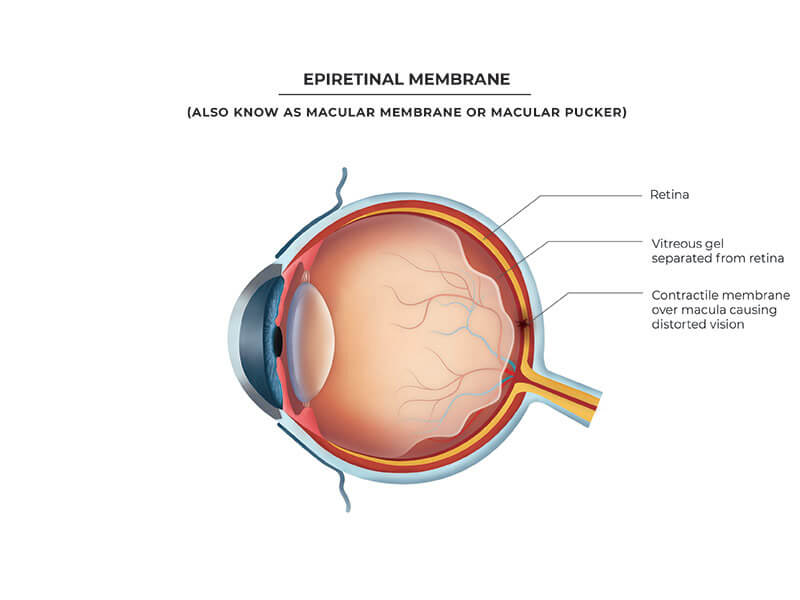Epiretinal Membrane Surgery
What is an epiretinal membrane?
An epiretinal membrane (also known as a macular membrane or macular pucker) is a condensation of a fibrous “membrane” on the surface of the macula. The macula is the centre of the retina where the…
What can be done for an epiretinal membrane?
A surgical procedure is perfmored that involves removing the vitreous gel and associated epiretinal membrane so that it is no longer pulling on the macula and causing visual distortion…
What can I expect after surgery?
There is usually very little pain. Your eye will feel itchy and scratchy for the first few days. You will be putting in eye drops four times per day for four weeks, and wearing an eye shield night for the first week. It is common…
What is an epiretinal membrane?
An epiretinal membrane (also known as a macular membrane or macular pucker) is a condensation of a fibrous “membrane” on the surface of the macula. The macula is the centre of the retina where the highest visual acuity is obtained. The membrane causes the surface of the macula to become wrinkled and more opaque, like a layer of plastic wrap over a camera film.
The vitreous is a jellylike substance which fills the central cavity of the eye. The vitreous gel shrinks with age in most people. As the vitreous shrinks. It pulls away from the retina (a posterior vitreous detachment or PVD). Usually this occurs without consequence. In some people the vitreous does not completely pull away and continues to contract, like a scar will contract and close. Visual acuity decreases to a level depending on how distorted the macular surface becomes. Some patients will have minimal visual distortion; others may have severe loss to the level of legal blindness.
Sometimes even though the vision reading the eye chart may be quite good, the vision will still functionally be poor due to distortion (straight lines appear bent, wrinkled). The decision on whether surgery is indicated or not depends on the level of vision and the level to which this impact your quality of life.

What can be done for an epiretinal membrane?
A surgical procedure is performed that involves removing the vitreous gel and associated epiretinal membrane so that it is no longer pulling on the macula and causing visual distortion.
The vitreous gel is replaced with a special balanced salt solution and gradually your body replaces it with naturally produced fluid. Sometimes an air or gas bubble is required to help flatten the retina.
Three tiny incisions are made in the eye to perform the surgery and closed with self-dissolving sutures.
If you are concerned that you may have a epiretinal membrane, you should contact an ophthalmologist for a professional examination.
What can I expect after surgery?
There is usually very little pain. Your eye will feel itchy and scratchy for the first few days. You will be putting in eye drops four times per day for four weeks, and wearing an eye shield night for the first week. It is common for patients to experience mild irritation for a few days after surgery, but severe pain is an indication to call your surgeon immediately.
The primary goal of epiretinal membrane surgery is to remove the membrane which is causing tractional force on the macula, thereby helping to prevent further deterioration in vision. The retina and its photoreceptors remodel over time (3-9 months) and most people notice an improvement in their vision and level of distortion, to a certain degree.